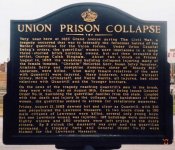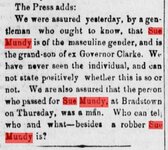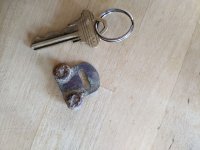Real de Tayopa Tropical Tramp
Gold Member
Good morning swr, you posted-->
"...no riding coattails please"
~~~~~~~~~~~~
Shucks almost all in here, including you, do that for information, since none were there.
Don Jose de La Mancha
"...no riding coattails please"
~~~~~~~~~~~~
Shucks almost all in here, including you, do that for information, since none were there.
Don Jose de La Mancha



 ?? So sue mundy (ay) could easily have been there.
?? So sue mundy (ay) could easily have been there.





